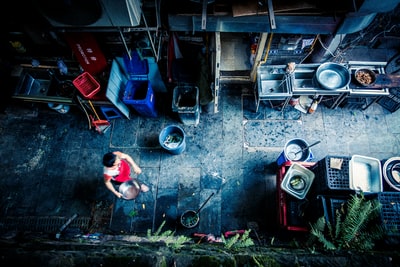 Infectious diseases are caused by microorganisms known as pathogens. Two main types of pathogen are:
Infectious diseases are caused by microorganisms known as pathogens. Two main types of pathogen are:
- bacteria
- viruses
Both can reproduce and multiple very quickly inside the body causing illness. They can then produce toxins which are poisonous for the body and cause a person to become ill. Viruses reproduce in cells causing them to become damaged in the process.
——————————————————
The body’s defence
There are a number of ways in which the body can protect itself from pathogens. One way is through white blood cells. They protect the body in three main ways:
- by ingesting the pathogen thereby breaking it down
- by making and releasing antibodies, which are then able to destroy a bacteria or virus
- by creating antitoxins which neutralise the poisonous effects of the toxins produced by the pathogens
In order for a particular pathogen to be destroyed, the immune system has to produce specific antibodies. This means that if that pathogen enters the body again the immune system knows what to release, making the body immune.
——————————————————
Semmelweiss’ idea

——————————————————
Antibiotic resistant strains
One example of bacteria which has been able to produce an antibiotic resistant strain is MRSA. This occurred through the process of natural selection: pathogens, like MRSA, are able to mutate and the strain able to survive is the one resistant to antibiotics.
It is through mutation that a pathogen is able to produce a new strain. The new one could mean that antibiotics and vaccinations will have no effect on it which could then cause an outbreak as people are no longer immune and there’s no treatment to deal with it. It is now vitally important for a new form of antibiotics to be created to kill these strains.
——————————————————
For students studying Higher Tier:
* Antibiotics are able to destroy the non-resistant strain of a pathogen.
* Due to the fact that antibiotics can’t kill the non-resistant strain, this survives and is able to successfully reproduce.
* In order to help slow down the speed at which a non-resistant strain developments antibiotics are only used to treat serious conditions as opposed to non-serious conditions, for example a mild throat infection.
NOTE: You don’t need to know the structure of bacteria or viruses.
——————————————————
Lab work

- In order to ensure that there are no unwanted microorganism present all Petri dishes and culture media used are sterilised.
- Inoculating loops, the instruments used to put the microorganisms into the media, are sterilised by passing the loop through a flame.
- Once the microorganisms have been transferred, the Petri dish lid must be fastened on with adhesive tape in order to stop the culture being contaminated by other microorganisms.
Laboratories in schools and colleges need to ensure that cultures are incubated at no more than 25